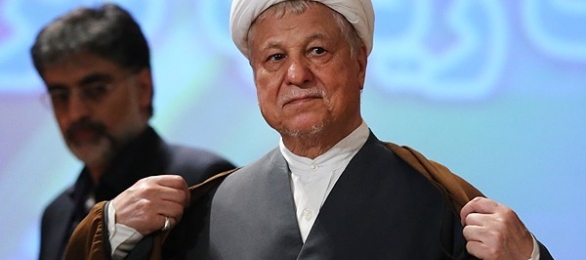Former President Hashemi Rafsanjani has renewed his political challenge to Iran’s Supreme Leader, implicitly calling Ayatollah Khamanei a tyrant.
In a speech on Monday at Amir Kabir University in Tehran, Rafsanjani used the historical analogy of the university’s namesake, the 19th-century Chief Minister Amir Kabir.
Rafsanjani honored Amir Kabir as the hero of the fight against tyranny, as the catalyst for “many impressive developments”, and as a source for the the Constitutional Revolution of 1905-1907.
He then aimed at the Supreme Leader by implicitly casting him as the villainous Shah whom Amir Kabir advised:
The university is named after someone who both understood the pain of our society and tried to treat this pain.
Amir Kabir understood the problem of foreign imperialism and domestic tyranny and he tried to fight it and on this path he lost his life.
Amir Kabir brought Naser ed-Din Shah to power, but the tyranny was ungrateful and with conspiracies of those close to Shah, he [Amir Kabir] was martyred.
For those familiar with Iranian politics, Rafsanjani’s message was clear. During his Presidency from 1989 to 1997 — which began as Ayatollah Khamenei was named Supreme Leader — he was often referred to as “Amir Kabir the Second“.
Monday’s speech — bolstered by ” target=”_blank”>an entry on the former President’s website about Amir Kabir — is only the latest attempt by Rafsanjani to build up his authority, and to curb that of the Supreme Leader, within the Iranian system.
Once considered finished in politics, following his July 2009 Friday Prayer supporting the right to protest after the disputed Presidential election, the former President clung on within the regime as head of the Expediency Council. He was boosted in 2013 by the election of his protégé Hassan Rouhani as President, following the Guardian Council’s rejection of Rafsanjani’s candidacy.
Rafsanjani has pressed the Supreme Leader on several occasions for leniency for political prisoners and an end to abuses. Perhaps more significantly, he has called for a change of the Iranian system, with a five-member Council replacing the Supreme Leader after his death. The proposal, repeated in February by the former President, has drawn the ire of hardliners.
Rafsanjani had been relatively quiet following his failure in March to reclaim the chair of the Assembly of Experts, which has the power to name and nominally to replace the Supreme Leader.
In his Amir Kabir speech, Rafsanjani echoed the regime’s current PR lines on foreign affairs. He warned that “colonial and foreign powers” are trying to break apart Iraq, Syria, Yemen, and Afghanistan to prevent “independent power in the region”.
However, it is his allusion to the Supreme Leader that has piqued interest inside Iran and that may re-ignite political tensions.
Even before Rafsanjani spoke on Monday, there were protests and counter-protests outside the lecture hall. Members of the paramilitary Basij at Amir Kabir, called out to demonstrate, chanted slogans such as “Death to the one against the Velayat Faqih [supremacy of the Supreme Leader]” and “Death to the head of sedition”. Others shouted in support of Rafsanjani and the detained leaders of the Green Movement such as 2009 Presidential candidate Mir Hossein Mousavi, held under strict house arrest since February 2011.

